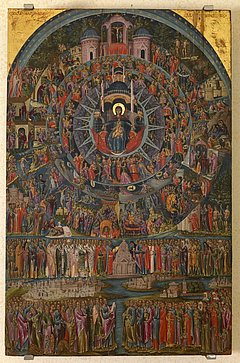Dans l'Eglise byzantine, l'Eucharistie s'appelle "la divine liturgie".
Les icônes ont une grande importance et plus de mille sont vénérées.
La fête de la transfiguration reçoit une importance particulière, qui colore toute la spiritualité orientale.
Parmi les fêtes mariales célébrées dans la liturgie romaine, beaucoup ont leur origine dans l'Eglise byzantine.
En plus des fêtes, Marie est très présente dans la liturgie de l'Église Byzantine à commencer par la liturgie du dimanche.
Le mercredi est consacré à la Mère de Dieu et à la croix.
Les fêtes mariales sont nombreuses, le nouvel an, 1° septembre, a une dimension mariale. Les cinq principales fêtes ont une journée de préparation (proeortia) et quelques jours succédant à la fête (meteortia).
Chez les orthodoxes, la fête de Pâques a une date calculée de manière différente qu'à Rome, du moins jusqu'au jour de cet article (2011).
Les greco-catholiques et les uniates ont un rite byzantin, tout en étant unis l'Eglise romaine.
Fêtes mobiles dans le temporal :
Fêtes dans le Sanctoral :
Le Sanctoral commence le 1 septembre et il finit le 31 août. Ce cycle, avec ses fêtes mariales, s'insère dans le cycle temporal parce qu'en Marie s’est réalisé toute l'économie du salut :
-
2 février : Fête de la rencontre d’Anne et Joachim, les parents de Marie, ou Ipapante, avec un jour de veille et 7 de meteortia
Françoise Breynaert

